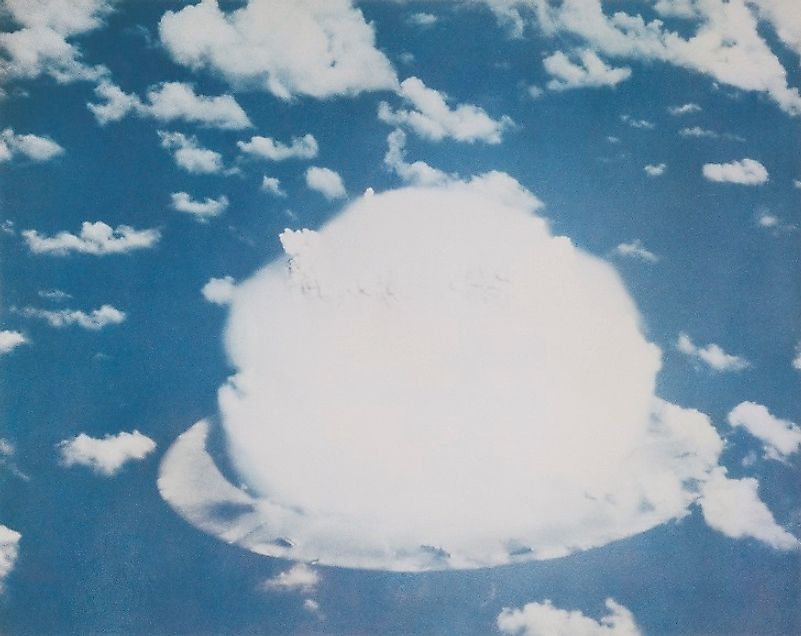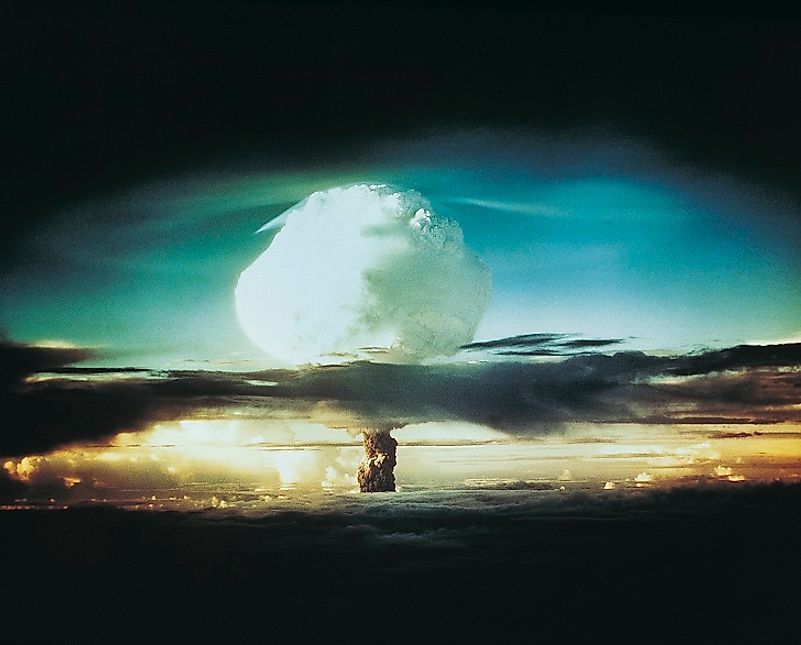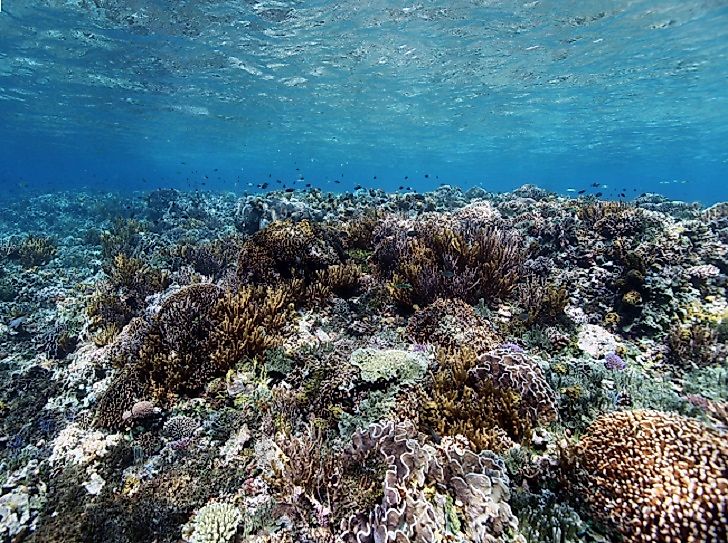Bikini Atoll, Marshall Islands - Site Of The First Hydrogen Bomb Test

Bikini Atoll is located to the north of the Marshall Islands. The Atoll was discovered in the 16th Century by Spanish explorers. The island was an important residential island until the end of the Second World War when it was used for nuclear weapon testing. The island has remained uninhabitable sine then due to the excessive amounts of radioactive elements in the soil, water, and even crops. Bikini Atoll is an important atoll both to the natives and to the world as an evidence of its role in the nuclear age and the natural and human history that occurred there preceding it. As such, it has been designated as a United Nations Educational, Scientific, and Cultural Organization (UNESCO) World Heritage Site.
5. Physical Geography -
Bikini atoll has a total of 23 coral islands surrounding a lagoon. The islands have an elevation of a maximum of 7 feet, and terrain which is mostly covered by water during high tides. Though the atoll is relatively dry, it has fertile soils which support coconut growing. The coconuts were exploited for the production of copra oil. The Bikini Atoll is mainly hot and humid with annual temperatures ranging between 27 and 29 Degrees Celsius.
4. Bikini Atoll Before And During World War II -
Bikini has been inhabited since the ancient times. The town was captured during World War I by the Japanese who occupied the island until the Second World War. While Japan was the administrator, local affairs were left to the traditional leaders. The residents were mainly subsistence farmers and fishermen. World War II saw the island serve as an important watchtower for the Japanese soldiers who also guarded the island against American invasion during the Battle of Kwajalein. The battle was triggered by the capture of the islands by the American soldiers. The Japanese soldiers on the island committed suicide to avoid being captured by American forces. After the Second World War and during the cold war, America was engaged in building nuclear weapons capable of mass destruction. The Bikini Islands were selected as testing grounds.
3. Nuclear Weapons Testing -

The U.S. Army and Navy officials relocated the Islanders under the directives of President Harry Truman after the identification of Bikini Atoll as the most suitable ground for nuclear weapons testing due to its distance from the sea and the absence of regular air traffic over the island. The Islanders were temporarily relocated to the Rongeric Atoll where they faced problems of starvation and later moved to Kili Island. The testing period lasted between 1946 and 1958. The one pictured above occurred in 1952. A total of 23 "mega-bombs" were tested 20 of them being hydrogen bombs. Tests were carried out on land, underwater, in air, and on the sea to test the effectiveness of the nuclear weapons and their feasibility in different environments.
2. Natural Habitats and Biodiversity -

Bikini Atoll is rich in coral reefs and has many native fish species, including the dogtooth tuna, barracuda, and the Bluefin trevally. Although the reefs initially contained toxic amounts of radioactive materials due to nuclear testing, they have recovered substantially in recent years.
1. Environmental Threats and World Heritage Site Recognition -
The nuclear weapon testing program left behind a trail of radioactive materials such as Caesium-137 that destroyed the natural environment and made parts of the island uninhabitable. The tests also led to the poisoning of the fish resources which became dangerous for human consumption. The Bikini Atoll was designated a UNESCO World Heritage Site in 2010 due to its significance in the nuclear age mainly the nuclear tests and the evidence of nuclear destruction. The site is also an important cultural site for the influence of the weapon testing to the world culture as well as existing architecture by the people of Bikini.











